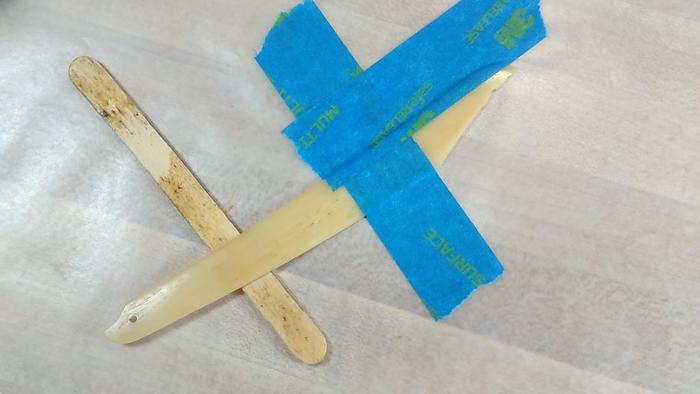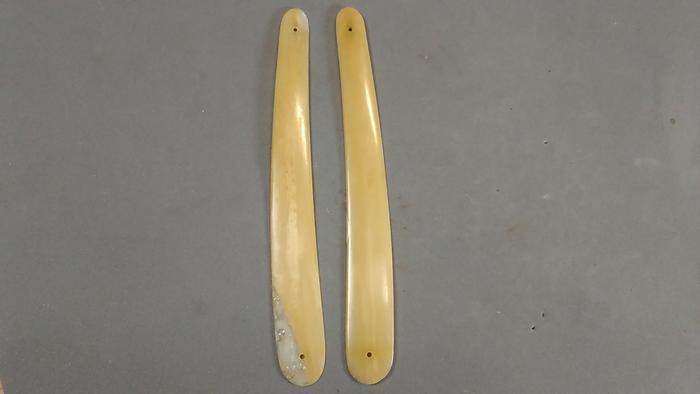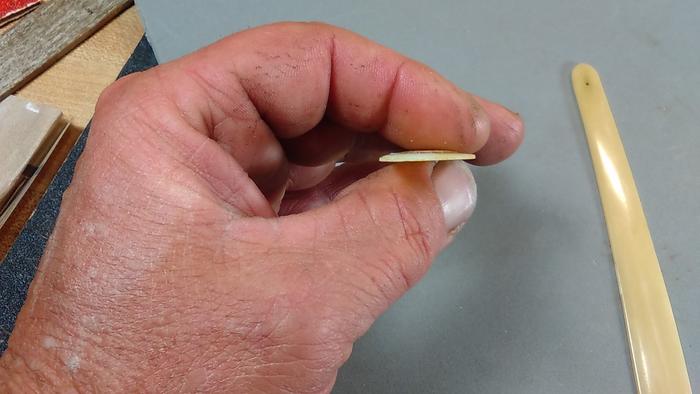Results 1 to 10 of 12
Hybrid View
-
10-05-2017, 10:09 PM #1Senior Member




- Join Date
- Feb 2013
- Location
- Haida Gwaii, British Columbia, Canada
- Posts
- 14,405
Thanked: 4823
I would absolutely try to repair those. The repair with the very fine fibreglass weave and epoxy that outback did worked out fantastic. I am not quite as creative and have repaired a few sets of scales by lining them with G-10. It comes as thin as 0.014" which is very close to a 1/64", and it does come thicker too. Bone bleaches well with peroxide. I would be inclined to take a piece of bone, fit it close, bleach it white and then stain it as closely as possible to match it up. I really like orange pekoe tea and espresso for staining. You can then adjust the darkness by sanding a little off with high grit wet dry paper.
That really is a beauty, both blade and scales.It's not what you know, it's who you take fishing!
-
The Following User Says Thank You to RezDog For This Useful Post:
Geezer (10-06-2017)
-
10-05-2017, 11:19 PM #2Str8Faced Gent.






- Join Date
- Aug 2013
- Location
- Orangeville, Ontario
- Posts
- 8,392
- Blog Entries
- 1
Thanked: 4200
As above. ^^^^
Totally worth saving. Fiberglass cloth and resin repair to reinforce the bone splice in place from underneath will work well.
Beautiful project piece..
Congrats."Depression is just anger,, without the enthusiasm."
Steven Wright
https://mobro.co/michaelbolton65?mc=5
-
10-05-2017, 11:37 PM #3

Definitely repairable. Superglue bonds great to bone. In my experience, there's never been any need for fiberglass and epoxy backing, and I've used superglue for structural pieces of ivory at the pivot.
Matching the colors will be an interesting challenge. If it were me, I'd try to get enough material to run multiple experiments on until I get it close.
Your best bet is to dye the add-in piece as close to the color of the original scales as possible, but a tiny bit lighter. Once glued on, use a sponge or paper towel to sort of feather in the dye.
But the pique work is absolutely worth preserving.-Zak Jarvis. Writer. Artist. Bon vivant.
-
The Following User Says Thank You to Voidmonster For This Useful Post:
rolodave (11-05-2017)
-
10-06-2017, 06:43 AM #4

Shaping and tea-staining a bone sliver and using superglue was exactly what I had in mind so it's great to hear that could work. Because it's not structural, the repair should not come under too much strain. I've had a beef shin ageing outside for a few weeks and intend to cut from that. If it doesn't hold I'll go the scales off and reinforce route...it would certainly make it easier to clean...but this seems to be a great survivor so I kind of want to preserve even the original pins and washers!
-
10-06-2017, 06:32 PM #5
-
The Following User Says Thank You to Wolfpack34 For This Useful Post:
Voidmonster (10-07-2017)
-
10-06-2017, 09:01 PM #6

Or you could do what is termed a museum repair - i.e. where you make no effort to disguise the insertion. This is most often done where a piece has significant historical value but a repair is required to provide the structural integrity to allow it to be used.
-
11-05-2017, 10:29 AM #7

Yes I've repaired ivory, and bone scales with CA.
I've used CA n Soda for many repairs on bone, and used no backer. The hardest part is getting it the match color of the original scales, I'm still working on that part.
But all the repairs to bone are very strong, and have held up to the pinning process.
This one was missing a large piece from the wedge end, and a small piece from the pivot.


And talk about thin..!!
 Mike
Mike
-
11-05-2017, 02:47 PM #8

Very Nice razor. Looking forward to seeing the final product.
Nothing is fool proof, to a sufficiently talented fool...
-
11-06-2017, 11:15 AM #9


 46Likes
46Likes LinkBack URL
LinkBack URL About LinkBacks
About LinkBacks






 Reply With Quote
Reply With Quote


